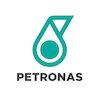Reducing greenhouse gas emissions: collaborative efforts in Mozambique, Egypt, and Algeria
Eni has been actively working across multiple countries to reduce greenhouse gas emissions in the oil and gas sector, collaborating with government bodies and local companies to foster capacity building and implement best practices. In September 2023, Eni organised a training session for senior officials from the Government of Mozambique to increase awareness and develop capabilities for methane emissions reduction in offshore operations. Eni shared its experience in methane mitigation, focusing on the energy-efficient design of Coral Sul floating liquefied natural gas (FLNG), its zero-routine-flaring policy, and fugitive emissions monitoring programs.
In Egypt, Eni partnered with the Egyptian Natural Gas Holding Company (EGAS) to assess the emission profile and evaluate opportunities to reduce methane greenhouse gas emissions across 21 EGAS plants provided by the operators. A detailed energy assessment will be carried out in 2024. In the framework of the collaboration, a fugitive emissions monitoring campaign was successfully implemented in the Western Desert Gas Complex operated by EGAS affiliate (GASCO), which led to leak-repairing activities. Furthermore, a desktop and practical training on fugitive emissions was provided by Eni to GASCO’s personnel for replication of the monitoring campaign across other facilities.
Furthermore, Eni has been working with Sonatrach in Algeria through a strategic partnership aimed at reducing emissions and strengthening energy security. This includes implementing leak detection and repair (LDAR) campaigns, identifying leaks in gas pipelines and production plants, and providing support for flaring reduction projects, conducting energy assessment on production plants as well as supporting in preparation of pilot emission baseline on specific production areas, in addition with specific training sessions on the afore mentioned topics. The collaboration will also extend to the use of satellite monitoring technologies to track emissions and inform mitigation strategies.
Through these initiatives, Eni continues to support global efforts in reducing greenhouse gas emissions and advancing sustainable practices in the oil and gas sector.
Learn more (p.10-11)









